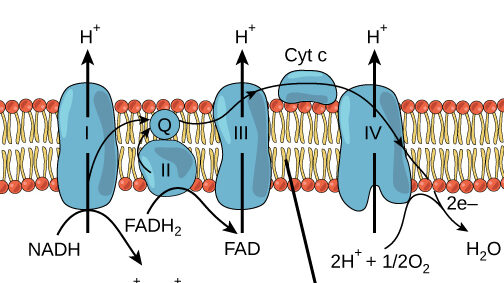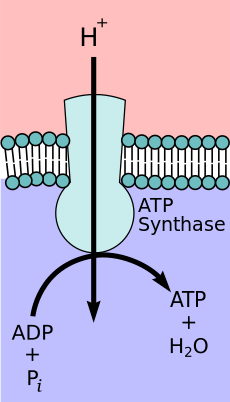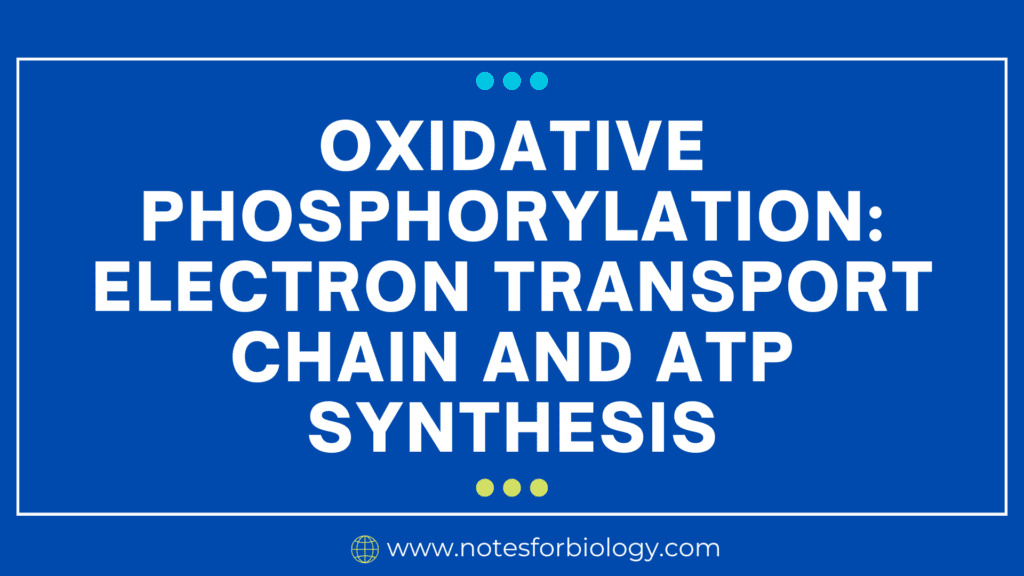Oxidative phosphorylation, the final stage of cellular respiration, is a complex and highly regulated process that harnesses the energy stored in electrons to generate the energy currency of the cell – adenosine triphosphate (ATP). This intricate dance of electrons and protons across a specialized membrane is the cornerstone of life, providing the vast majority of the energy required for virtually all cellular functions.
Table of Contents
The Electron Transport Chain: A Journey of Energy Transfer

At the heart of oxidative phosphorylation lies the electron transport chain (ETC), a series of protein complexes embedded within the inner mitochondrial membrane. This chain acts like a relay race, passing high-energy electrons from one complex to the next, each step releasing a small amount of energy.
The journey begins with the reduced electron carriers, NADH and FADH2, generated during glycolysis and the Krebs cycle. These carriers deliver their high-energy electrons to the first protein complex of the ETC, NADH dehydrogenase (Complex I). As electrons move through Complex I, protons are pumped from the mitochondrial matrix into the intermembrane space, establishing a proton gradient.
The electrons then travel to ubiquinone (Q), a mobile electron carrier that shuttles them to Complex III, the cytochrome bc1 complex. This complex further utilizes the energy from electron transport to pump protons across the membrane, adding to the growing proton gradient.
Next, the electrons reach cytochrome c, another mobile carrier, which delivers them to Complex IV, cytochrome c oxidase. Here, the electrons are finally passed to molecular oxygen (O2), the terminal electron acceptor. This reaction combines oxygen with protons, generating water (H2O) as a byproduct, completing the journey.
ATP Synthase: The Energy Harvesting Machine

The energy released throughout the ETC is used to establish a proton gradient across the inner mitochondrial membrane. This gradient represents a significant concentration of protons in the intermembrane space compared to the matrix, creating a potential energy source.
ATP synthase, a large protein complex embedded in the inner membrane, acts as a molecular turbine, utilizing the proton gradient to generate ATP. This process, known as chemiosmosis, is driven by the flow of protons back into the matrix through a channel within ATP synthase. The energy released during this flow is coupled to the synthesis of ATP from ADP and inorganic phosphate (Pi).
The Significance of Oxidative Phosphorylation
Oxidative phosphorylation is the primary source of ATP in eukaryotic cells, generating approximately 34-38 molecules of ATP per molecule of glucose. This energy is essential for a multitude of cellular functions:
Metabolic processes
ATP fuels anabolic reactions, such as protein synthesis, DNA replication, and cell growth.
Cellular transport
ATP powers active transport systems that move molecules against their concentration gradients, maintaining cellular homeostasis.
Muscle contraction
ATP provides the energy for muscle contraction, enabling movement and locomotion.
Nerve impulse transmission
ATP fuels the active transport of ions across neuronal membranes, allowing for nerve impulse propagation.
Regulation and Efficiency
Oxidative phosphorylation is a highly regulated process, ensuring optimal ATP production while minimizing wasteful energy expenditure.
Substrate availability
The activity of the ETC is directly influenced by the availability of electron carriers like NADH and FADH2, which are generated by the preceding steps of cellular respiration.
Oxygen availability
Oxygen is the terminal electron acceptor, and its presence is crucial for the ETC to function. Low oxygen levels can significantly reduce ATP production.
ATP concentration
The cell closely monitors ATP levels. High ATP concentrations inhibit the activity of the ETC, ensuring efficient energy utilization.
The Impact of Oxidative Phosphorylation
Dysregulation of oxidative phosphorylation can lead to various diseases, including:
Mitochondrial diseases: These disorders affect the function of mitochondria, leading to impaired ATP production and a range of symptoms, including muscle weakness, fatigue, and developmental delays.
Cancer: Some cancers exhibit increased oxidative phosphorylation, contributing to their uncontrolled growth and proliferation.
Neurodegenerative diseases: Impaired oxidative phosphorylation has been implicated in neurodegenerative diseases like Alzheimer’s and Parkinson’s.
Conclusion
Oxidative phosphorylation is a vital process that underpins life, providing the energy necessary for all cellular functions. The intricate interplay of the electron transport chain, proton gradient, and ATP synthase ensures efficient ATP production, enabling cells to thrive and perform their crucial roles in the body. Understanding the intricacies of this process is essential for comprehending the fundamental workings of life and the potential for therapeutic interventions for various diseases linked to its dysregulation.
Frequently Asked Questions(FAQ)
What do you mean by Oxidative phosphorylation?
Oxidative phosphorylation, the final stage of cellular respiration, is a complex and highly regulated process that harnesses the energy stored in electrons to generate the energy currency of the cell – adenosine triphosphate (ATP).
List out the impact of The Impact of Oxidative Phosphorylation?
The Impact of Oxidative Phosphorylation are,
Mitochondrial diseases: These disorders affect the function of mitochondria, leading to impaired ATP production and a range of symptoms, including muscle weakness, fatigue, and developmental delays.
Cancer: Some cancers exhibit increased oxidative phosphorylation, contributing to their uncontrolled growth and proliferation.
Neurodegenerative diseases: Impaired oxidative phosphorylation has been implicated in neurodegenerative diseases like Alzheimer’s and Parkinson’s.
Related Articles

